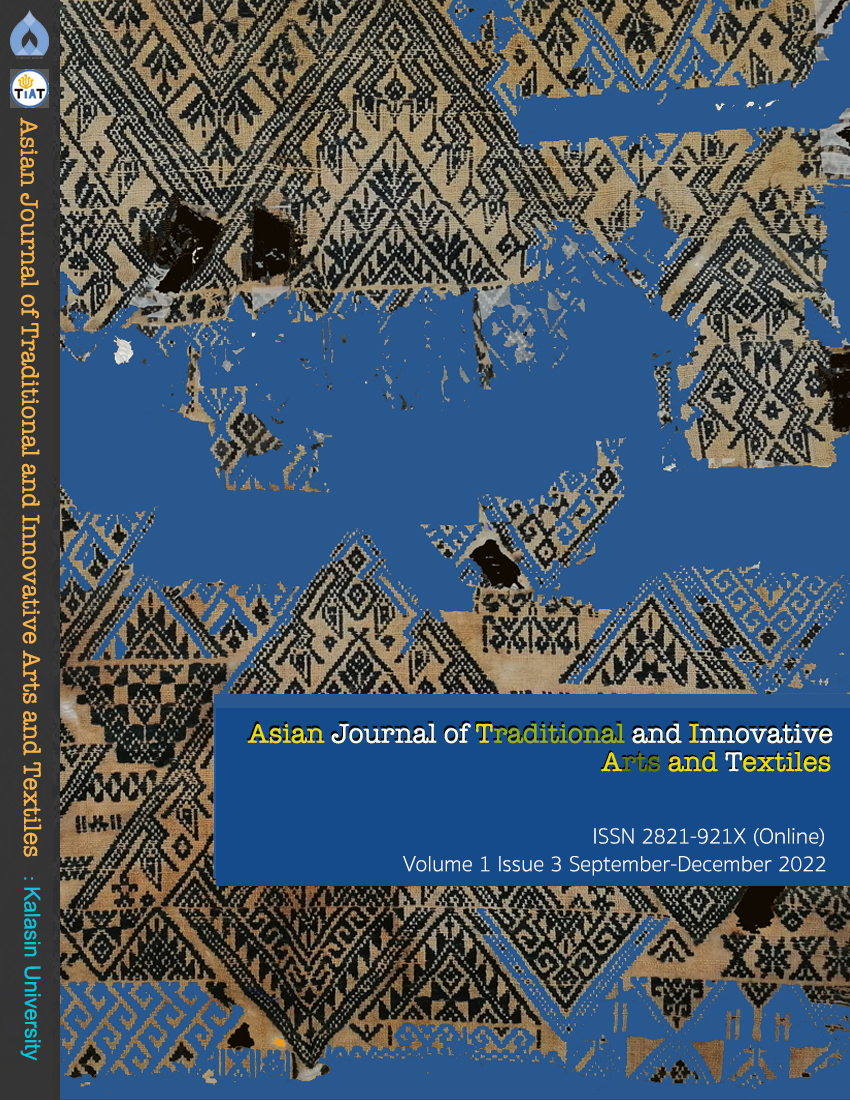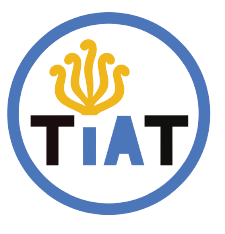Survey and Recommendations for Utilization on Vernacular Houses of the Phu-Tai Ethnic Group in Kalasin Province.
Keywords:
Vernacular houses, Vernacular architecture , Conservation , Houses , Phu-Tai ethnicity , KalasinAbstract
The research-based article which is titled as Survey and Recommendation for Utilizationon Vernacular Houses of the Phu-Tai Ethnic Group in Kalasin Province, was undertaken as the survey research on vernacular houses of the local architecture. And in particular, it was studied to find utilization of Phu-Tai community architecture located on National Highway No. 227 and by applying participative process. The focused architectures were ‘Huen’(house), ‘Huen Fire’(kitchen)unit and ‘Loa Khaw’(home rice barn). The survey employed survey guidelinesfor the architectures in 3 subdistricts situated in Kalasin Province and on National Highway No. 227, and non-structure interview guidelines for target groups. The target groups were 26 house owners, executives or administrators and officials working in Local Administrative and Government Organizations. The findings were; Phu-Tai vernacular architectures located on the National Highway No. 227 which is all original and classic ethnic houses, have been declining in crisis stage but obviously witnessed the adaptation of the owners to modern, contemporary styles. However, the contemporary adaptation has affected to the changes of kitchen unit (Huen Fire). In the part of home rice barn or Lao Khaw, it has been in consistency and persistency by and in relation with the rice farmers’ way of life. The rice barns have been existing in their function as families’ entire-year, food stock that the local farmers’ community need it. And it was viewed as the important vernacular architecture in this survey. In the utilizations of Phu-Tai vernacular architectures,it has been outlined as guidelines in the 6 approachesas following. Conservation, Learning, value-added and elevation of these classic housesand their compounds, Tourist attraction and studying resource, Research and local wisdom collection and resources, Publishing purposes and in the approach for Exploration drive force and utilized in local government organizations’ conservation and development action plans.
References
Banjon Thawasri. Building owner. Interview. April 2022.
Boonserm Sribanphon. Building owner. Interview. April 2022.
Choosak Inthamon and Saranya Lertbhuttharak. (2019). The Management Model of Homestay Innovation Business in the Community for Tourists. Silpakorn University Journal. 39(6): 85-103.
Karn Kehawit. Building owner. Interview. April 2022.
Karnchanok Dabsomdet. (2016). Homestay Business Management By Sufficiency Economy Guidelines: Case Study Phu-Tai Ban Phon Community, Kham Muang District, Kalasin Province. Journal of The Way Human Society. 4(2): 310-327.
Nudtakhed Maneekorn and Ornsiri Panin. (2016). Dynamic Aspects of Vernacular Houses at Baan Tung Tom, San Patong, Chiang Mai. NAJUA Journal : Architecture, Design and Built Environment. 30 : 215-233.
On Yurata. Building owner. Interview. April 2022.
Prayong Thesarin. Building owner. Interview. April 2022.
Parinya Chukaew. (2557). Survey and Inventory of Important Buildings Worthy of Preservation in Tha Muang Old Market Community, Tha Muang District, Kanchanaburi Province. NAJUA Journal. 11(4): 152-175.
Princess Maha Chakri Sirindhorn Anthropology Centre. (2022). Ethnic Group: Phu-Tai. Searched 1 December 2022, from https://www.sac.or.th/databases/ethnic-groups/ethnicGroups/81
Prinya Mruksirisuk and Vira Inpuntung. (2020). From Cultural Ecology to Architectural Ecology. NAJUA: Architecture, Design and Built Environment. 35(1) : 3-18. https://so04.tci-thaijo.org/index.php/NAJUA-Arch/article/view/243000/165093
Puriwaj Dachaum. (2556). Creative Tourism: From Concepts To Practice for Thailand. Silpakorn University Journal. 30(2) : 331-366.
Rawiwan Oranratmanee. (2016). Spiritual belief and the formation of Usakane vernacular house. NAJUA: History of Architecture and Thai Architecture. 8 : 334-347. https://so04.tci-thaijo.org/index.php/NAJUA/article/view/16763
Royal Thai Government Gazette. (2561). National Strategy (B.E. 2561 - 2580). Searched 30 November2022, Searched from https://ppi.psu.ac.th/upload/forum/20_2561-2580.pdf
Sakawrat Boonwanno and others. (2563). Reflecting on the Past, Looking at the Present, and Determining the Future: Directions for Tourism Management in Takua Pa Old Town through the Community Participation. Rajabhat University Northern Region Network Academic Journal. 10(2): 127-140.
Sombat Prajonsant, Vsar Fengveang and Piyachon Sangsakda. (2020). The Vernacular Architecture Database in Buriram Province. Journal of Humanities &Social Sciences (JHUSOC). 18(2): 1-23.
Suepong Chansuebsri. (2557). Mae Chaem Wooden Houses: Breath of Lanna Ancient Houses. NAJUA: Architecture, Design and Built Environment. 28 : 75-97.
Supawadee Kramrangsee and Pranom Tansukanun. (2564). The conservation urgency of the valuable architecture on the Lamphun old town’s main streets. Academic Journal Environmental Architectur. 8(2): 2-25.
Suthep Chaiyakhan. (2556). Isan People History: Phu-Tai, Look Thaen. Bangkok : Tathata Publication.
Thanis Sathiannarm and Nopphadol Tangsakul, (2016). Dynamic of House Styles in the Northeast of Thailand . Academic Journal Faculty of Architecture, Khon Kaen University. 15(2): 1-16.
Thanis Sathiannarm and Nopphadol Tangsakul, (2016). The Status of Academic Outputs in Vernacular House Study in the Northeast of Thailand. Academic Journal Faculty of Architecture, Khon Kaen University. 15(1): 59-75.
Term Chinana. Building Owner. Interview. April 2022.
Umaphorn Lamool. Building owner. Interview. April 2022.
Wachiraphong Kittirach. (2019). The Characteristics of Vernacular House Plans in Northeast Thailand along Chi River Basin. NAJUA Journal. 16(2): 100-119.
Wan Lamool. Building owner. Interview. April 2022.
Yong Boonari. (2554). Tai-Esan Traditional Rice Barn. Academic Journal Faculty of Architecture, Khon Kaen University. 10(1): 24-35.
Downloads
Published
How to Cite
Issue
Section
License
Copyright (c) 2022 Asian Journal of Traditional and Innovative Arts and Textiles

This work is licensed under a Creative Commons Attribution-NonCommercial-NoDerivatives 4.0 International License.





